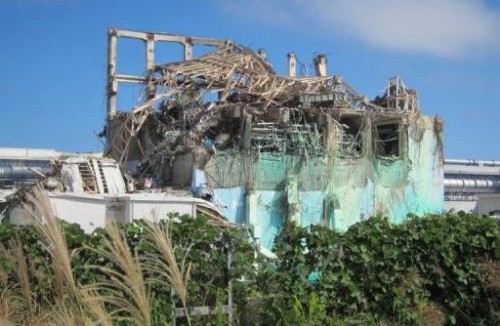
By Toby Simpson
Tokyo’s energy sector is a system, which relies heavily on imported fuel. The energy sector provides power to a population of 12.99 million (Blanco, 2011) and is vulnerable to climate change, as the climate risk assessment (Mehrotra et al., 2009) that follows will show. With approximately 10% of the population of Japan (TMG, 2010), Tokyo’s adaptation and mitigation responses to climate change can have a significant impact on the energy sector.
Because of growing urbanization, Tokyo has experienced an increase in temperature of 3 degrees Celsius (Blanco, 2011). As temperatures continue to increase and night temperatures stay warmer than average, the demand for energy will be greater, increasing the burden on existing energy infrastructure. Such stresses during peak hours can lead to system failures and service disruptions. When these events take place, vulnerable populations, such as the 22.1% of Tokyo’s population that is over the age of 65 (OCED, 2010), are placed at greater risk for health problems, including heatstroke.
Japan and the Tokyo Metropolitan Government moved to create sustainability plans that addressed climate change. The main goal was to shift power generation away from coal and petroleum fuels with a greater emphasis on renewable and nuclear energy while reducing demand by implementing energy-efficiency programs and regulations to make a low-carbon, low-energy society (TMG, 2007). Since the earthquake and tsunami in March 2011, energy supply and demand has had to be rethought. During the months after the disaster at Fukushima a plethora of adaptation strategies have been implemented, since the majority of the country’s nuclear reactors are off-line (Meltzer, 2011). In order to meet the base load capacity demands, the city has put in place staggered working hours to distribute the load demand during the summer months, revised office dress code to allow for greater comfort and to reduce the amount of cooling needed in buildings. Tokyo also has established total reduction goals in energy demand and has petitioned for changes in the national building codes to reduce lighting level standards (TMG, 2011).
The Tokyo Energy Savings program will lead to a reduction in energy usage by creating a strong foundation upon which to build new strategies. A key area of the plan that will lead to greater resilience in future disasters is to create a decentralized energy system that is dependent on renewable energy. Another component addresses monitoring of facilities that eventually can be expanded into a complete measurement and verification program. A comprehensive program should allow for the sharing of information about different energy savings measures and create a community of trust through research and development of best management practices. Particular focus should be spent on developing new technology that will allow for the capture of waste heat from HVAC systems. Since waste heat can increase air temperature by 1 – 2 degrees Celsius (Ohashi, 2007), implementing such programs will effectively reduce the cooling demand on buildings, conserve energy and help to reduce the effects of the urban heat island.
References:
Blanco, H. et al. (2011). The role of urban land in climate change. Climate Change and Cities: First Assessment Report of the Urban Climate Change Research Network, 240.
Mehrotra, S., C.E. Natenzon, A. Omojola, R. Folorunsho, J. Gilbride & C. Rosenzweig. (2009). Framework for city climate risk assessment. Washington, DC: World Bank.
Meltzer, J. (2011). After Fukushima: What’s Next for Japan’s Energy and Climate Change Policy? Global Economy and Development at Brookings, September 7, 2011.
OECD. (2010). Country Statistical Profile. Available at http://www.oecd-ilibrary.org/economics/country-statistical-profile-japan_20752288-table-jpn. Accessed on October 10, 2011.
Ohashi, Y. et al. (2007). Influence of Air-Conditioning Waste Heat on Air Temperature in Tokyo during Summer: Numerical Experiments Using an Urban Canopy Model Coupled with a Building Energy Model. Journal of Applied Meteorology and Climatology, Volume 46, 78, 66-81.
TMG (Tokyo Metropolitan Government) (2010). Population of Tokyo: Population Summary. Tokyo, Japan: Tokyo Metropolitan Government. Available at http://www.metro. tokyo.jp/ ENGLISH/PROFILE /index.htm. Accessed October 10, 2011.
Tokyo Metropolitan Government (TMG) (2007). Tokyo Climate Change Strategy ‘ A Basic Policy for the 10-Year Project for a Carbon-Minus Tokyo. Tokyo, Japan: Tokyo Metropolitan Government. Available at http://www.kankyo.metro.tokyo.jp/ en/attachement/ tokyo_ strategy_full.pdf. Accessed October 23, 2011.
Tokyo Metropolitan Government (TMG) (2011). Tokyo Energy-Savings Program Overview. Tokyo, Japan: Tokyo Metropolitan Government. Available at http://www.kankyo.metro .tokyo .jp/en/attachement/ tokyo_ strategy_full.pdf. Accessed November 7, 2011.
This article is a product of Professor Shagun Mehrotra’s Climate Change and Cities class. Views expressed are entirely those of the individual author.